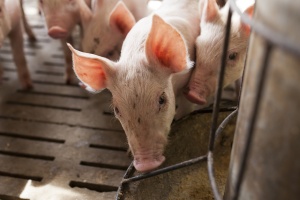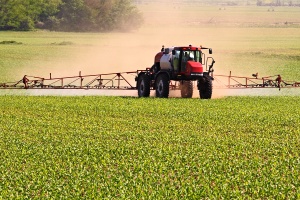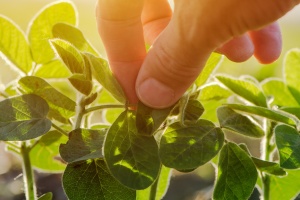How farmers keep Illinois drinking water clean so you can beat the summer heat
I have spent pretty much my entire career thinking about our water, and what I can do to keep Illinois drinking water clean and safe. After all, I drink the same water and enjoy nature’s beauty just like you.
A farmer’s responsibility is to ask ourselves this question: “What is the potential impact of this farming practice on the land and water resources?”
No action, positive or negative, should precede the asking of this question. The same goes for water quality.
My name is Jeff O’Connor. I live in northeast Illinois near the small town of Irwin, population less than 100. We grow soybeans, corn and wheat. The O’Connor family settled this area in the late 1800s and has been farming it ever since.
In 1989, my grandfather invited me to our local Kankakee County Soil and Water Conservation District (SWCD) meeting. He never made it to another one, and I never left. A soil and water conservation district’s purpose is to look at the farmer-land-water relationship and find ways to improve it. Our greatest potential for growth comes from times when we initially feel the most uncomfortable. Becoming involved with the SWCD was no exception. I was a fresh college graduate, stepping into an arena filled with lifelong farmers from all corners of the county. To say that I felt out of place, with nothing to contribute, was an understatement. I remember sitting in a back corner of the board room for what felt like a year before adding to any discussions.
While uncomfortable at first, it’s been rewarding ever since. For the last 25 years, I’ve served as director for the district, and for 30-plus years I’ve been able to hear about, and often see, the newest ideas in land conservation long before the general farming community has. I’ve never felt like an innovator, just a very early adopter.
And nothing gives you an appreciation for clean water like visiting another country and seeing what it’s like to go without it. On a mission trip to the Dominican Republic, my wife and I saw firsthand street sewage and polluted water resources. That experience instilled in me to never take clean water for granted, and to do whatever I can to continue improving this resource.
Keeping Illinois water clean starts with healthy soil
Even though we don’t have highly erodible land on our farm, we still have enough slope that excess water will gather and run off my fields. And when that water runs off, it takes with it one of our most precious resources, the topsoil.
Why is topsoil important? Because it contains all the nutrients that plants need to survive. In fact, analysis shows that the nutrient loss in this runoff is as damaging as losing the soil itself. So, I have a vested interest in helping water move across my fields in a way that’s safe for the environment and my livelihood. Here are a handful of ways I’ve done this:
- Areas prone to erosion on my farm have almost continually been protected by small grass buffers, which help trap the sediment carried by the water.
- Both my grandfather and father used below-ground drain tile before most other farms did. Drainage tile is meant to reduce water erosion and remove excess standing water from fields. This is a practice that hasn’t come without criticism. Some might say that it speeds up water movement off the land and can contribute to water quality issues. On my farm, water quality of drainage water now carries as much weight for my cropping decisions as preventing erosion always has. We’ve incorporated water control structures that work year-round. These systems can be used to hold back drain water during the summer months when water is needed. This in turn reduces the amount of nutrients leaving a field through field drainage.
- We’ve enrolled some of our field edges where water runs off in the Conservation Reserve Program (CRP), meaning instead of planting crops on that ground, we’ve planted habitat that will prevent soil erosion, support wildlife habitat and keep Illinois water clean and safe.
- No-till and strip tillage are used on all fields. This means we’re reducing and sometimes completely eliminating how much we turn over the soil each year. This also helps reduce soil erosion and builds organic matter (a.k.a., plant food) in the soil, thanks to leftover stalks and plant material from the previous harvest.
- We use cover crops before all soybean planting and are experimenting with planting these crops ahead of corn. Cover crops are planted in the fall and grow until spring. They reduce soil erosion, improve soil health by providing nutrients and enhance overall soil structure by increasing organic matter. Learn more about this “blanket” for fields.
There is no substitution for the land and water resources we have in the Midwest, and the responsibility we feel as farmers to keep Illinois drinking water clean and safe. Just like other industries, what we know and the technology we have is always changing, and so we aim to make continuous improvements as we go. And in my experience, farmers have always adapted for the better.
Have questions about other things farmers are doing to keep Illinois water clean and safe? Leave a comment below.










0 Comments